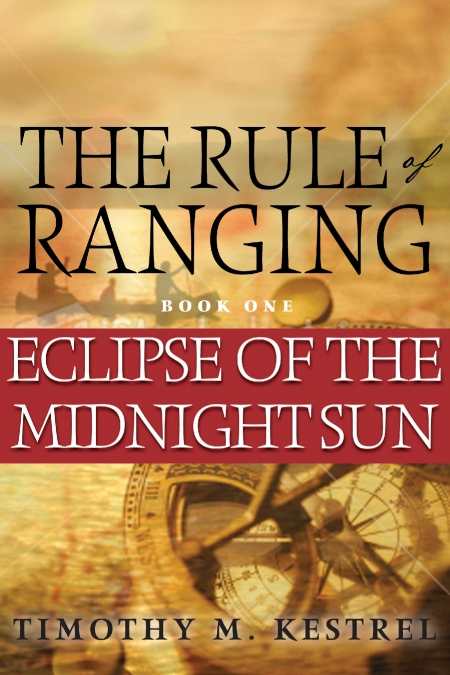The Rule of Ranging 1
Eclipse of the Midnight Sun
In 1854, intrepid journalist and New York Times founder Henry Raymond makes the arduous journey by stagecoach up a sheer mountainside trail in pursuit of a story he intends to preserve for posterity. His destination is a remote but opulent lodge in the Catskills that overlooks Hudson River Valley wilderness and is home to an elderly, garrulous soldier of fortune with a tale to tell from a time of battles between Colonials and Loyalists, British-French, Cossacks and Swedes and Finns, with everyone battling indigenous bands of tribal warriors for control of Northeastern American territories.
“I will tell you how the forests were painted red … tales of fame gained, fortunes lost in brutal combat, glory muddled, and love everlasting!” muses former colonial Ranger Morton from the comfort of his well-appointed, well-armed suite. The gaunt yet imposing host also states: “I will tell you about the Rule.” As the narrative unfolds, readers learn Rangers adhere to a complex credo that can be expressed simply as, “there are times when people sleep peaceably in their beds at night only because rough men stand ready to do violence on their behalf.”
Timothy M. Kestrel, a former US Army Ranger, casts dozens of combatants, innocent victims, and not a few buffoons in a fast-paced parade of skirmishes and classic battlefield encounters across eighteenth-century Scandinavia and on to the colonies of New France and New England. Kestrel reveals a time when political and commercial avarice orchestrated complex military strategies from a safe distance that ultimately were decided by knives, muskets, and swords at close range.
Through Morton’s reminiscence, readers learn that his life begins as Finn, a strapping man-child coming of age along the eastern border of war-torn Finland in the late 1700s. He is a gifted hunter of game, and his good looks and affable character are attracting the attention of willing young ladies. It is a good time to be Finn, right up to the moment that, as he hides in a muddy ravine under a fusillade of Cossack musket fire, he watches helplessly at the destruction of his friends, family, and village. His escape does not go unnoticed by an ambitious marauding Hessian lieutenant. Finn’s newly forged adversary mounts a vengeful, relentless pursuit across Europe, the Atlantic, and well into the frontier wilderness of the North American colonies.
The author’s narrative style draws comparisons to the cinema and, in fact, much of the evolving drama reads like a blockbuster Spielberg screenplay–colorful, dangerous, and exciting. Character development is largely dependent upon urgent, coarse dialogue between people who are either tormented or the tormentors: “Where are those two maggots? I will tear their lungs out and feed them to the pigs! … And if I ever find out who changed my suppressed pistol I will tear his head off and shit down his neck!”
Kestrel is mostly respectful of historical accounts surrounding his characters’ adventures. However, his occasional use of twentieth-century slang and profanity will likely distract some readers. Sometimes less is more, and several wandering digressions from the action detract from the compelling plot line.
Overall, this swashbuckling tale of likable protagonists and truly vile antagonists is entertaining and informative. The Rule? It is one Finn hopes will replace his resignation to a life of meaningless serial conflict and love lost. A Rule he is well on his way to learning at the conclusion of Book One.
Reviewed by
R. L. McCreery
Disclosure: This article is not an endorsement, but a review. The publisher of this book provided free copies of the book and paid a small fee to have their book reviewed by a professional reviewer. Foreword Reviews and Clarion Reviews make no guarantee that the publisher will receive a positive review. Foreword Magazine, Inc. is disclosing this in accordance with the Federal Trade Commission’s 16 CFR, Part 255.

